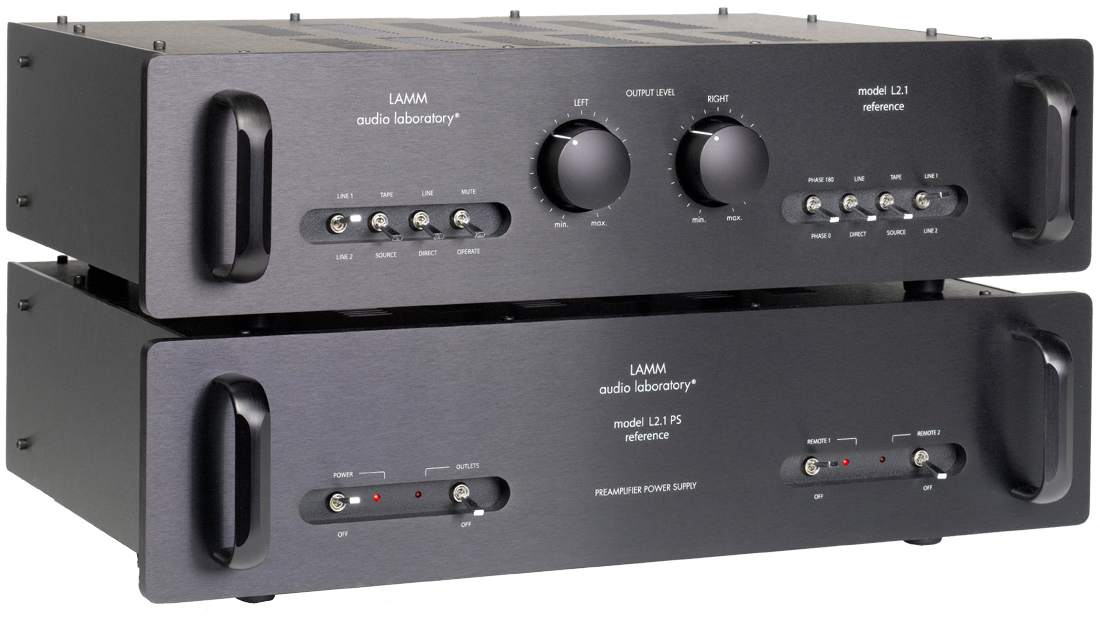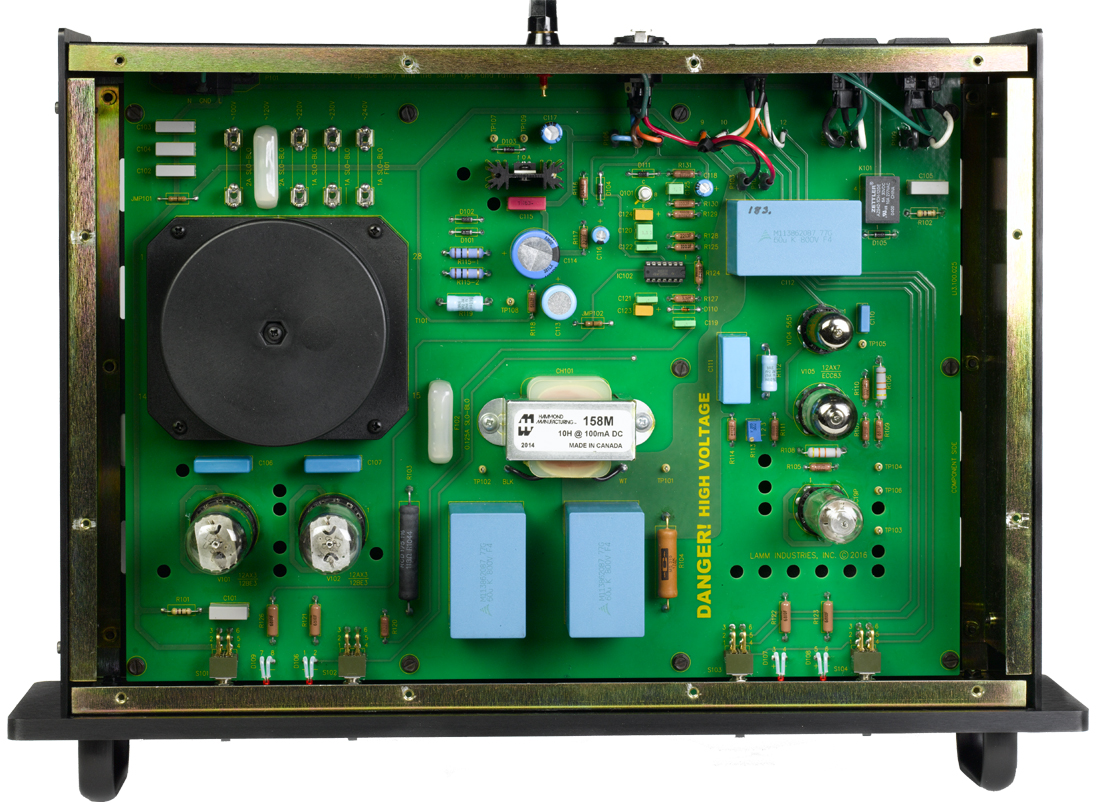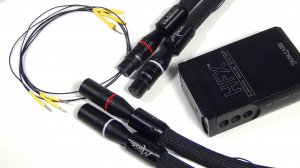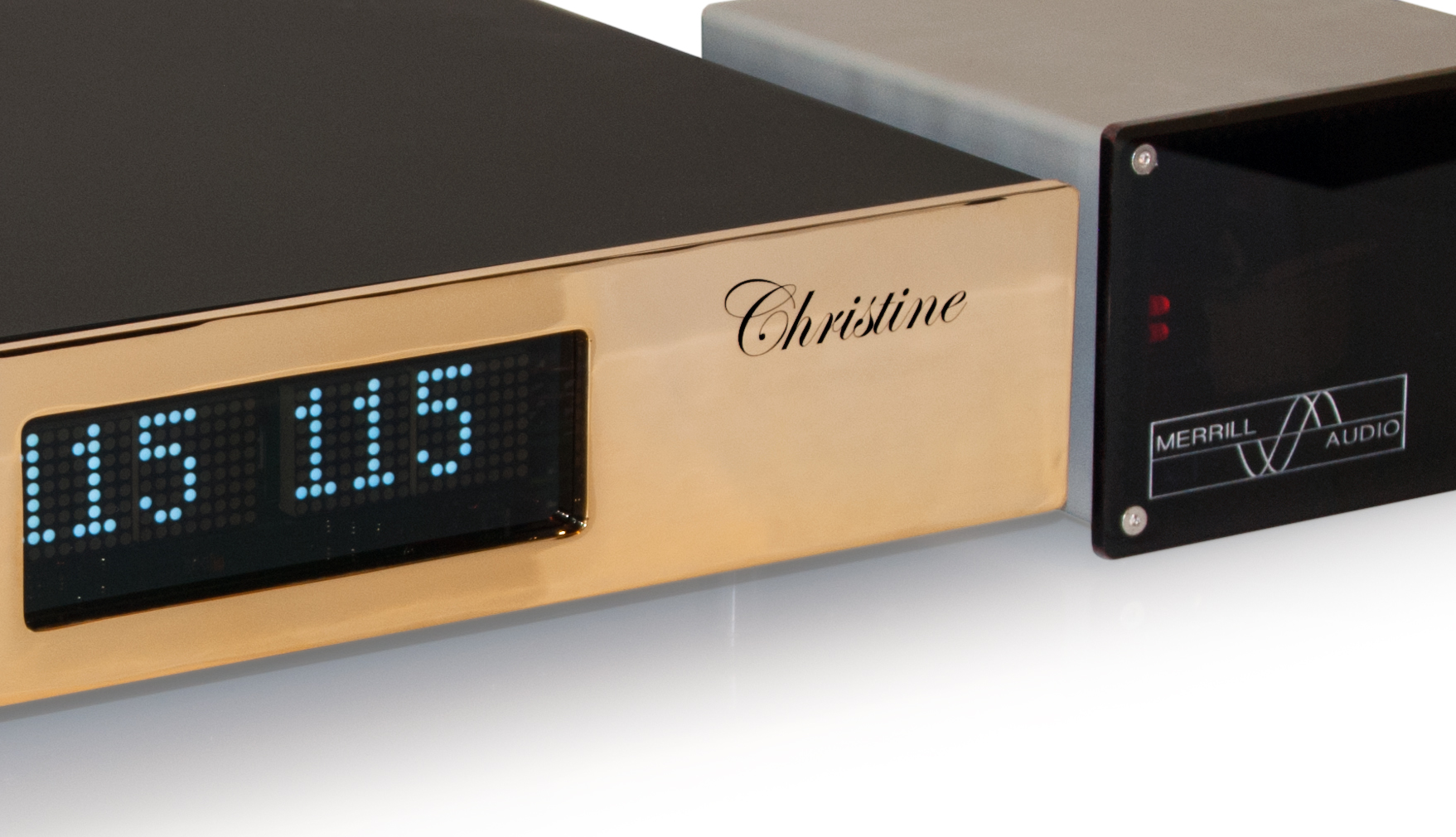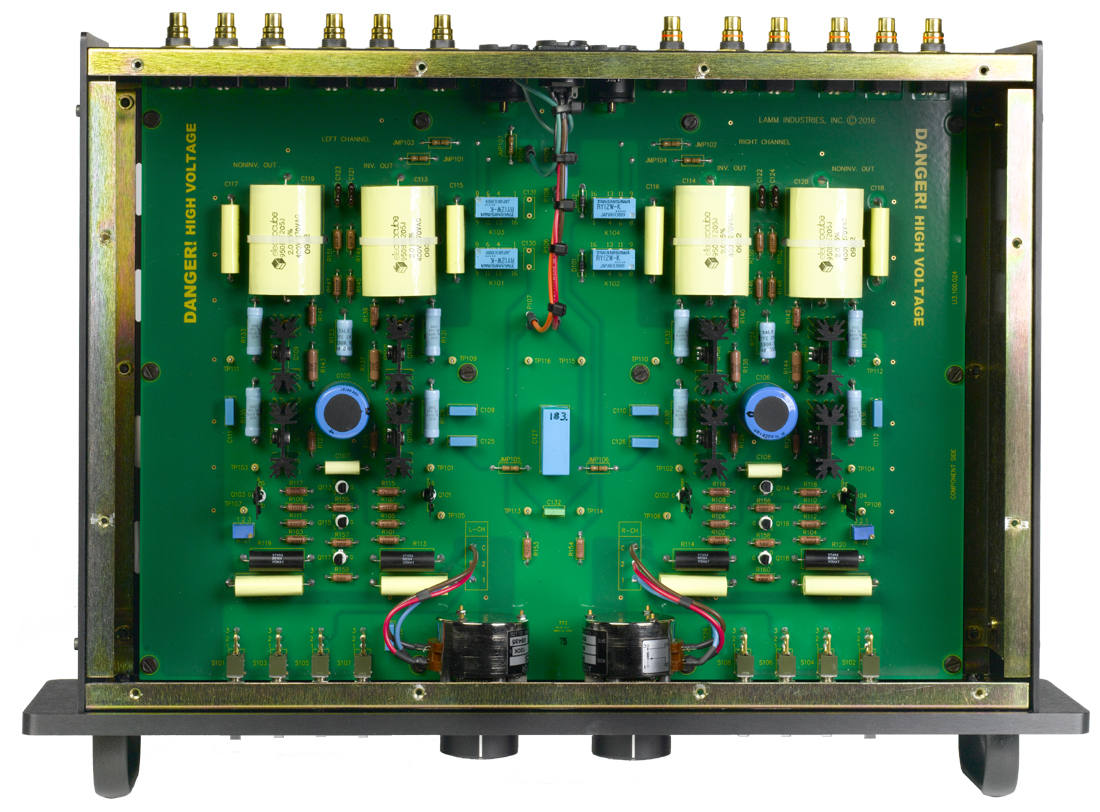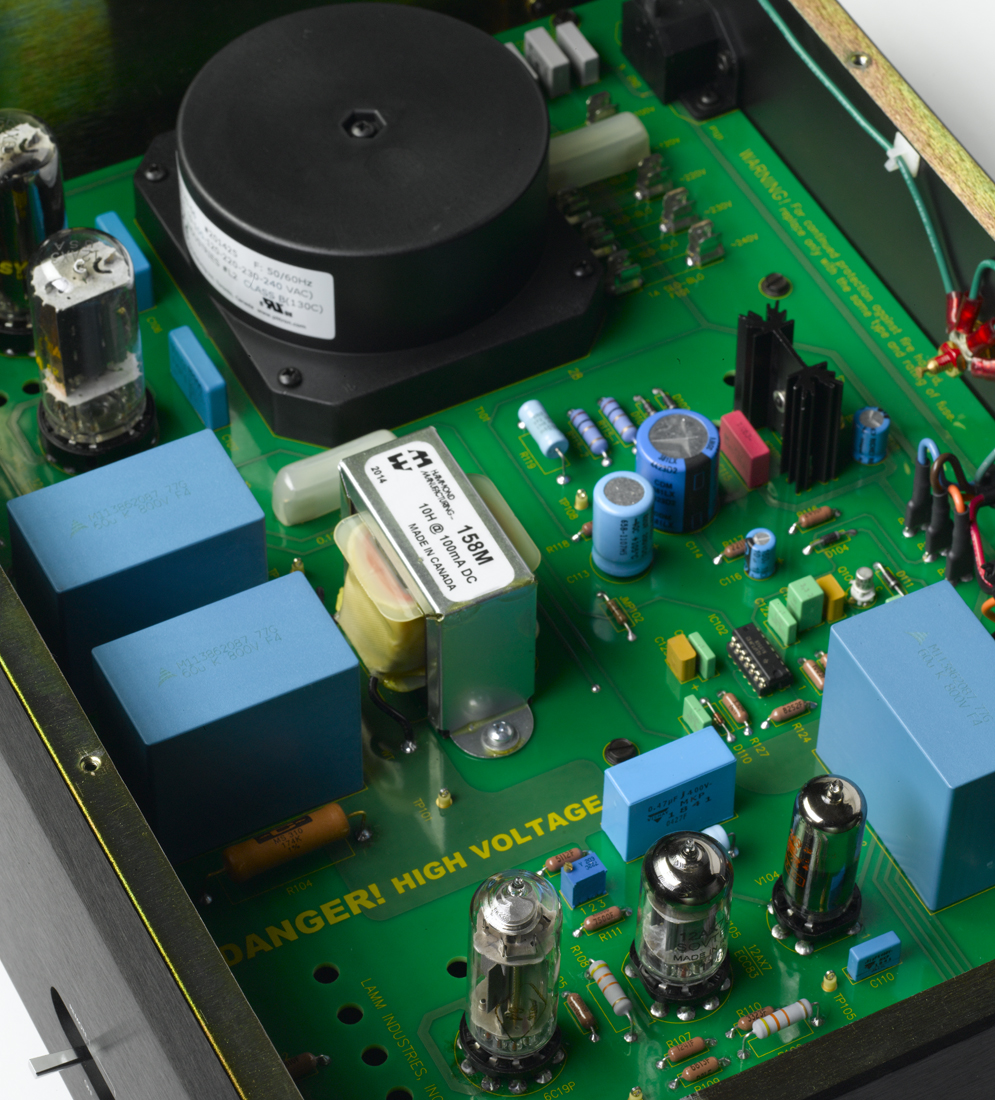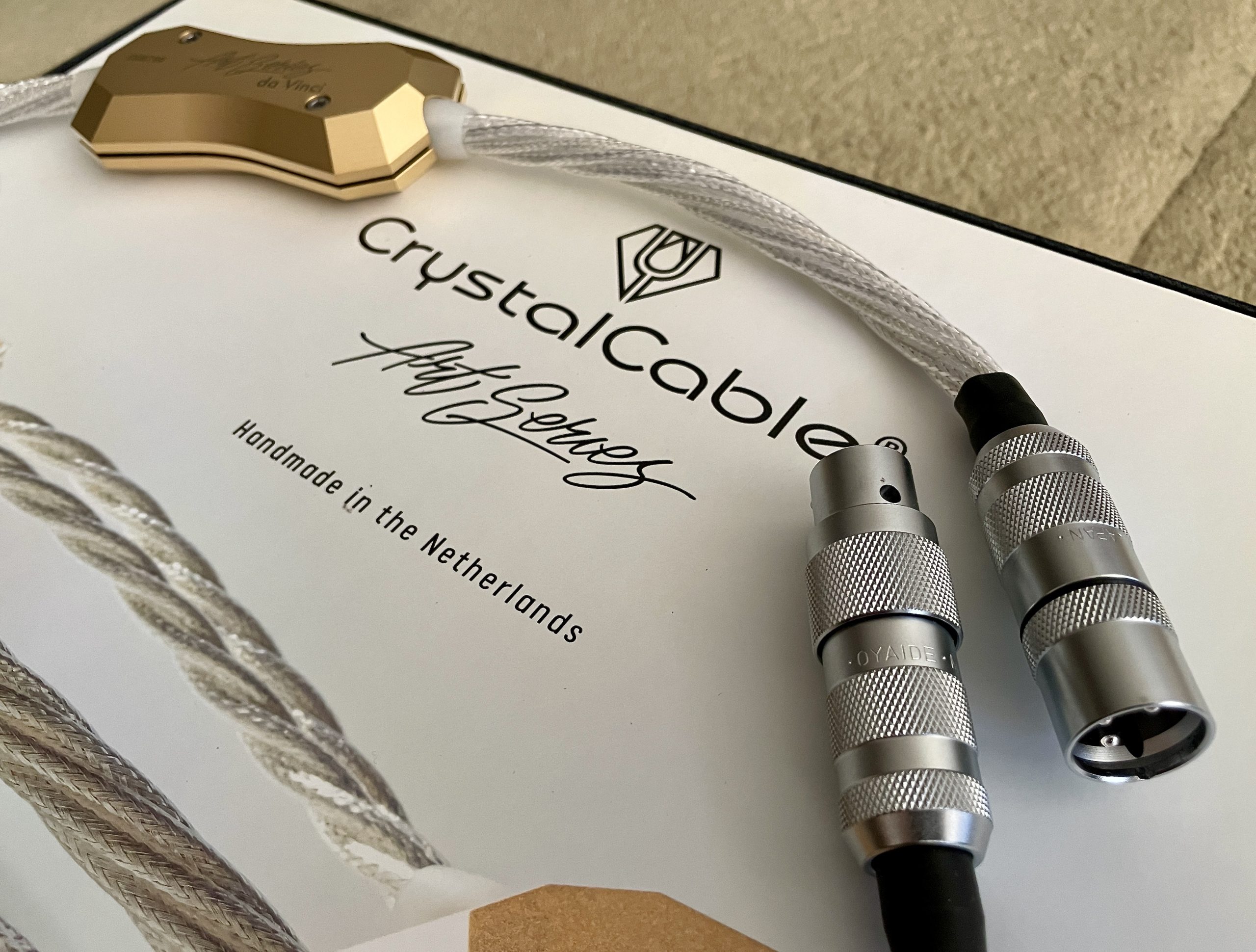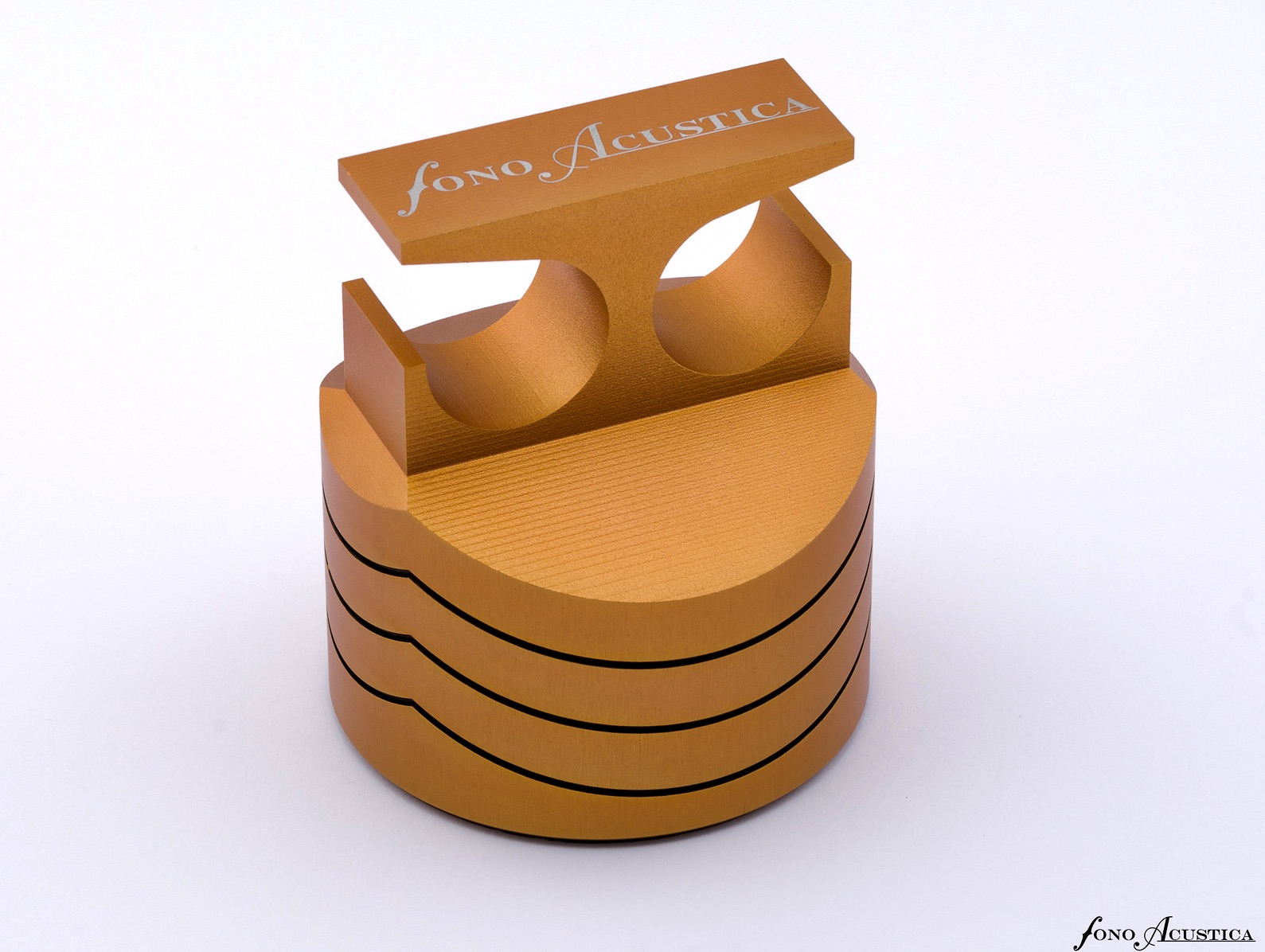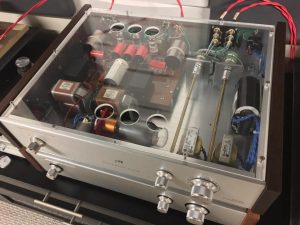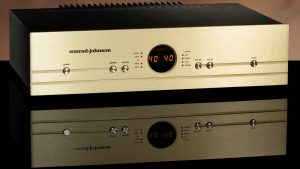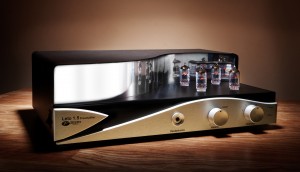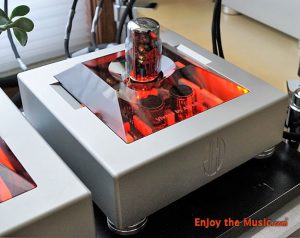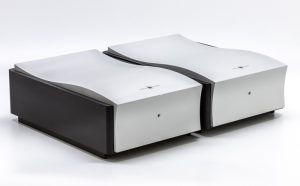"I suppose there's no remote? Dual mono volume controls?" I was discussing the operation of his L2.1 Reference Preamp with Vladimir Lamm.
VL: "Yes, that's right."
MN: "Ah, determinedly 20th century."
VL: "Correction: 22nd century."
MN: "Huh? Don't you mean 21st?"
VL: "No. Sometime at the beginning of the next century, they will realize the contamination introduced by these controls." Who said Vladimir Lamm doesn't have a sense of humor?
Although it's now 2017, you wouldn't know it judging by the Lamm L2.1 Reference Preamp. Like a time machine, it could be the 1970s, when dual mono stepped attenuators were in vogue.
Lamm doesn't come out with a new model every season. The new L2.1 Reference Preamp updates and replaces the venerable L2, which had a production run of 15 years. To the casual eye they look identical. Like its predecessor, it is a hybrid with two chassis. The control unit is solid-state; the external power supply is tubed. Cosmetics didn't change; the differences are internal.
General Description
The product description remains as follows:
- Pure class A fully balanced MOS-FET zero feedback design. Power supply utilizes vacuum tube rectifier, choke contained filter and high speed vacuum tube voltage regulator.
- High-current drive capability, in combination with unique single-ended class A circuitry, enable the preamplifier to handle any cable and any connected real world load, while maintaining its practically inaudible sonic signature.
L2.1 Upgrades
The L2.1 revision includes the following upgrades and modifications:
- increased immunity to unwanted radio frequency interference propagated via both radiation and conduction over signal lines and AC power systems.
- certain modifications in protection and time delay circuitry.
- improved signal/noise ratio.
- replacement of a number of critical components with newly available types of better quality. In particular, the electrolytic capacitors in the tube voltage regulation section replaced with high density polypropylene capacitors of comparable size and value.
- utilization of a new type of pc-board of superior quality, with gold-plated traces and thru-holes.
Rules of Attraction
A new stash of music purchases had just arrived. Good stuff, like Transcendental, with the amazing pianist Daniil Trifonov playing Franz Liszt; the Bartok Violin Sonatas, with Barnabas Kelemen, violin, and Zoltan Kocsis, piano; and Dutilleux Orchestral Works, with the Seattle Symphony.
I casually sampled them after letting the L2.1 burn-in (four days on the tuner). I recognized the sound. Lamm gear has certain hallmarks, notably excellent coherency and integration, plus they can always be counted on for reliable naturalism. It was immediately appealing, a nice blend of resolution and musicality. Specifically, it recalled the Lamm LP1 Signature Phono Stage I reviewed recently. With that product vinyl playback had attained a very high orbit indeed.
A pattern began to emerge. All of those CDs elicited thumbs up for sound quality, an assessment that would continue largely unabated. You know you don't get CD after CD sounding good without some measure of sweetening. I set about finding out how the sugar was implemented in the L2.1.
First thought: this is a hybrid component with a lot of tubes. Does it sound like tubes or solid-state? The bass is warm, big, and tight, but not like solid-state bass; the midband is cooler than the bass and more transparent; the treble is rounded, sweet, extended and less prominent than the other bands; tone is dense and full. Timbres are complex and very well-drawn, tending to the wet side (as opposed to dry). All in all, that reads like a tubey portrait.
Power Supply view with tubes
Yes, a filament signature was noted, but a coloration can be heavy or light. In the case of the L2.1 we're talking about a minor footprint that tread lightly on the signal and didn't really get in the way. It was just enough to make the source sound good without masking it. Detail retrieval was impressively high and the soundstage was exactingly defined. Every time I switched CDs, the differences in the recording acoustic and engineering choices were laid bare, allowing keen insight into the proceedings. Most listeners noted the tubey aspects and simply moved on.
This was in the context of my CH Precision electronics and Kubala•Sosna Elation! wires connected to K•S XPander Power Distributors. There were a couple of Stage III wires in the mix—the Triton power cord and Gorgon interconnect—also a Dynamic Design Neutron SW 16 Digital Power Cord on the transport. This combination is my reference at the moment.
The Muse
As it happened, I had some new wires on hand from TARA Labs. I inserted a couple of runs of The Muse interconnects and, wouldn't you know it, they proved just the right ancillary to trim the tubey colorations. The soundscape sharpened up, edge details came into focus. In fact, everything came into focus. The shuffled deck of sonic attributes was closer to neutral, even as it retained its musical aspects—and it was more engaging.
TARA Labs The Muse Interconnect
The lesson learned is "Synergy is Rule Number One." When considering the L2.1, audition a few cables and choose wisely. On balance, I have no problem assigning the L2.1 to the neutral side of the ledger.
The Question of Speed
I want to take a moment to describe the L2.1 transient. The unit is capable of powerful dynamics and the leading edge is well-controlled—but not over-controlled. Everything arrives together and lands on the ear wholly without stridency or irritation. It makes what you might call a soft landing. At the other end of the note, decays take their time and linger a bit longer.
Note onset and decay greatly influence our impressions of speed. Some guys are adamant that faster is always better, but understand speed is a relative commodity. In the real world, perceived note onset and rate of decay vary from one concert hall to another. The soft landing transient and lengthy decay lend the L2.1 a hint of luxurious pacing, while promoting good musical flow. It all seems quite natural to me and I had no issue with the unit's speed, although I did note the L2.1 takes its time compared to the CH Precision L1. The L2.1 is reminiscent of Carnegie Hall, while the CH L1 is more like Alice Tully Hall.
The Merrill Christine Preamp
I couldn't help noticing how the L2.1's soft landing and lengthy decay bore a resemblance to another preamp I just finished reviewing, the solid-state Merrill Audio Christine.
The Merrill and the Lamm were similar in other ways as well, the biggest being their effect on listeners. When the Christine Preamp was in line, after no more than a minute a contented expression would appear on their faces, and they visibly relaxed. They ceased talking or whatever they were involved in to give full attention to the playback. These reactions to the Christine Preamp were immediate, repeatable, and always salubrious. More often than not that happened with the L2.1.
Less hi-fi
The L2.1 throws a high res, panoramic stage that begins at the plane of the speakers and recedes. The surface of the stage is smooth with nothing projecting forward in front of the speakers. Instruments are portrayed as large objects with dense tone, lots of body and weight, and diffuse borders. Nothing is forced on you.
So, you see, the L2.1 goes out of its way to reduce fatigue. In general, there are no burrs, nothing that would irritate the listener. True to the Lamm pedigree, it is less hi-fi sensational than most preamps.
Main chassis interior
Functionality and Usage
Because every function is dual mono, there are plenty of toggle switches on the front panel of the control unit. The left side is (almost) a mirror image of the right. The twin stepped attenuators of the volume control have to be carefully matched.
There's no LED display, not even a power-on indicator on the front panel; a single red diode on the power supply tells you it is on. There's no remote: everything is manually operated—but we've already talked about that.
The L2.1 has three inputs: Line 1, Line 2, and Direct. The Direct Input has the best sound because it bypasses both left and right selector and monitor switches and goes directly to the volume pots. Even though the topology of the preamp is fully balanced there are two sets of outputs, RCA and XLR. If you use the RCA outputs, there is an option to change the phase of the output signal via the "Phase 0 – Phase 180' switch located on the front panel. As Vladimir himself points out, he had a reason for not introducing balanced inputs, and the L2.1’s inverting inputs are simply grounded.
Power Supply interior
The power supply has five tubes and does get warm, so provide adequate ventilation. Connect the power supply's regulated and filtered AC feed to the control unit with a supplied umbilical cable. You can leave the L2.1 on all the time; otherwise, the manufacturer recommends a minimum 25-minute warm-up before serious listening. I'd make that closer to an hour.
Conclusion
Hard to believe I first made acquaintance with the Lamm L2 Reference preamp back in December, 2004. At that time it cost $14,790. After a production run of 15 years, we now have the L2.1 revision. The design is largely intact; the revision incorporates a battery of upgrades and a new MSRP of $22,790. The cost has outstripped the inflation index, but consider the cachet: handmade in Brooklyn, New York. Brooklyn has become a brand, in advertising speak. Who would've thought?
The L2.1 took me by surprise. Auditory memory is a porous filter, yet I don't recall enjoying the precursor anywhere near as much as the L2.1. The Lamm voicing is consistent, but the L2.1 is much better than its predecessor.
If that voice has appealed to you in the past, you'll find the L2.1 moves the bar forward on all counts. It is a solid recommendation at its price point.
Lamm L2.1 Reference Preamplifier
Retail: $22,790 USD
Specifications
RATED OUTPUT VOLTAGE
- from 20Hz-20KHz into instrument load: 0.75 Volts RMS.
- from 20Hz-20KHz into IHF load: 0.75 Volts RMS.
VOLTAGE GAIN
- 5.54 ± 2% or 14.87 ± 0.2dB.
FREQUENCY RESPONSE
- from 1-40 Volts RMS into instrument load: (-0.2dB) 20Hz, 20KHz. (-3dB) 5Hz, 140KHz.
- from 1-20 Volts RMS into IHF load: (-0.2dB) 20Hz, 20KHz. (-3dB) 5Hz, 120KHz.
TOTAL HARMONIC DISTORTION FROM 20 HZ - 20 KHZ
- Vout = 2 Volts RMS into instrument load: no more than 0.03%
- Vout = 40 Volts RMS into instrument load: no more than 0.5%
- Vout = 2 Volts RMS into IHF load: no more than 0.03%
- Vout = 20 Volts RMS into IHF load: no more than 0.5%
IM DISTORTION
- (60Hz:7KHz 4:1) SMPTE:
- Vout = 2 Volts RMS into instrument load: no more than 0.03%.
- Vout = 40 Volts RMS into instrument load: no more than 0.65%
- Vout = 2 Volts RMS into IHF load: no more than 0.03%.
- Vout = 20 Volts RMS into IHF load: no more than 0.45%.
INPUT SENSITIVITY
- Vout = 0.75 Volts RMS into instrument load: 0.135 Volts RMS ± 2%.
- Vout = 0.75 Volts RMS into IHF load: 0.135 Volts RMS ± 2%.
INPUT IMPEDANCE
- 50 KOhms.
CORRECTED OUTPUT IMPEDANCE
- typically 130 Ohms.
NOISE
- signal-to-noise ratio below 2 Volts RMS output, unweighted: typically 83 dB.
- signal-to-noise ratio below 2 Volts RMS output, 22Hz-22KHz: typically 94 dB.
- signal-to-noise ratio below 2 Volts RMS output, A-weighted: typically 97 dB.
POWER SUPPLY
- Power consumption: typically 80W
- Input voltage range: ±10%.
- One power transformer, two vacuum tube rectifiers, one filter choke, one high speed vacuum tube voltage regulator, one solid-state analog non-switching voltage regulator.
- AC voltage intensively filtered by special RFI power line filter.
- Burn-in Time at Factory: Minimum 72 hours.
- Recommended Burn-in End-user's System: Minimum 96 hours.
- Warm-up time: Minimum 25 minutes.
UNIT DIMENSIONS (preamplifier and power supply have the same dimensions)
- 4.5 inches high x 19 inches wide x 13.875 deep + 1.375 inches of depth for front handles.
UNIT WEIGHT
- preamplifier: 15.42 Lbs (7 Kg).
- power supply: 19 Lbs (8.63 Kg).
TUBE COMPLEMENT
- one 12AX7/ECC83, voltage regulator tube;
- one 6C19P, voltage regulator tube;
- one 5651A, voltage reference tube
- two 12AX3, rectifier tubes.
NOTE:
Instrument load: the load consisting of 91 KOhm resistor and 200 pF capacitor connected in parallel.
IHF load: the load consisting of 10 KOhm resistor and 1000 pF capacitor connected in parallel.
Lamm Industries, Inc.
2513 East 21 Street
Brooklyn, NY 11235
+1.718.368.0181 tel.
+1.718.368.0140 fax




